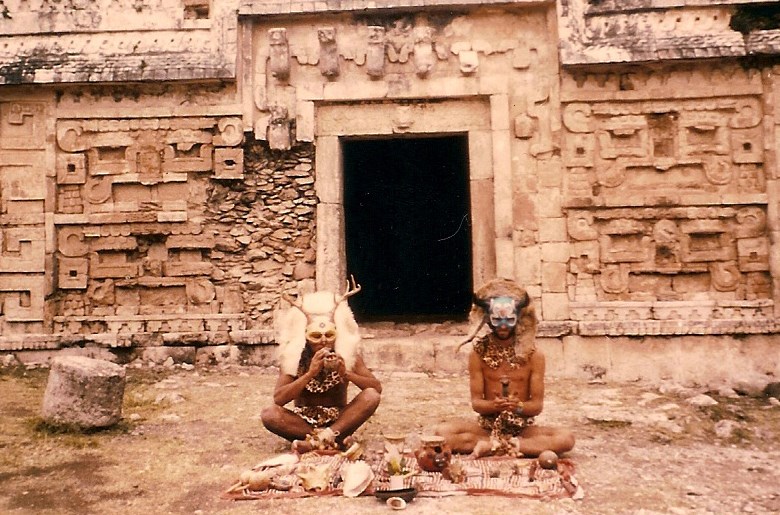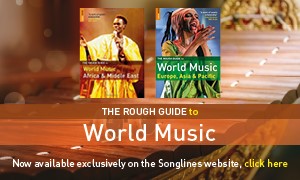Tuesday, September 28, 2021
Xochimoki: Curating The Aztec Audio Revival
By Chris Moss
Jim Berenholz and Mazatl Galindo speak to Chris Moss about their 40-year-long mission to reanimate the lost sounds and instruments of ancient Mesoamerica

Xochimoki, live at the Los Angeles Music Center, 2015
Xochimoki came about in 1981, when US-born music researcher Jim Berenholtz bumped into Mazatl Galindo playing traditional flute at an Aztec New Year ceremony in a town outside Mexico City. Three years later, the two friends decided to form a group; their name, which conflates the Nahuatl and Hopi languages, means ‘Flower of the Ancient Ones’.
For almost 40 years the duo have been exploring forgotten musical instruments and reviving lost sounds. This October, Brighton-based record label Phantom Limb releases their album The Temple of the New Sun, which pulls together some of the duo’s earliest material. Employing replicas of indigenous ocarinas, pelt drums and bone flutes, and using Mesoamerican languages to summon feathered divinities and animal spirits, they meld new music from ancient sources.

Chichen Itza, during the spring equinox, March 1986
“As living artists we’re always creating new material,” says Berenholtz. “But this reissue excites us because we know that it opens the opportunity for millions of people to hear our music who have never heard it before.”
For Galindo, the project is personal. “I feel very fortunate and grateful for my native Aztec/Mexica upbringing. From an early age, and with the help and guidance of elders and family, I was involved in ancestral dances, ceremonies and teachings. Music and song have always been an essential aspect of our relationship to all that is in all realms.”
In the mid-80s, music that spliced together field-type recordings and ambient rhythms was pigeonholed as New Age. Berenholtz says the term demeaned both the message and the music. “There is a perception that ‘New Age’ music is very saccharine, very calming and harmonically safe. But our music is not like that at all. It has a lot of high-energy rhythms, a lot of dissonance, often some wildness to contrast the sections where it is calming, and always there are unusual textures and unexpected sounds. In short, it has both light and darkness.”

Seneca Nation land, New York, May 1986
“Also, while the music of Xochimoki may be ‘New’, it is still very much rooted in an ancient world. If there is a label to be used in reference to our music, I prefer to call it ‘Neo-Ancient’.”
Since the 90s, Xochimoki have incorporated native instruments from other parts of the world, and sung in other ancient languages, with a focus on the music of rainforest regions. Berenholtz, based in Sedona, Arizona, is also involved in spiritual counselling and ceremonial work, guides hiking and archaeology tours, and produces mandala paintings for printing onto frame drums. Galindo lives in Santa Fe, New Mexico, building homes inspired by native techniques and sacred geometry.
He sees their music as part of a wider holistic revival. “During a dark period in our history, much of the music, songs, science, cosmology and overall knowledge of ancient Mexico was hidden from view and passed on through oral tradition until a New Sun with a new generation of knowledge-keepers arrived. Around the time we were embarking on a renaissance of our traditions, Xochimoki came into being.”
Read the review of Temple of the New Sun in the Songlines Reviews Database
This article originally appeared in the October 2021 issue of Songlines. Never miss an issue – subscribe today

